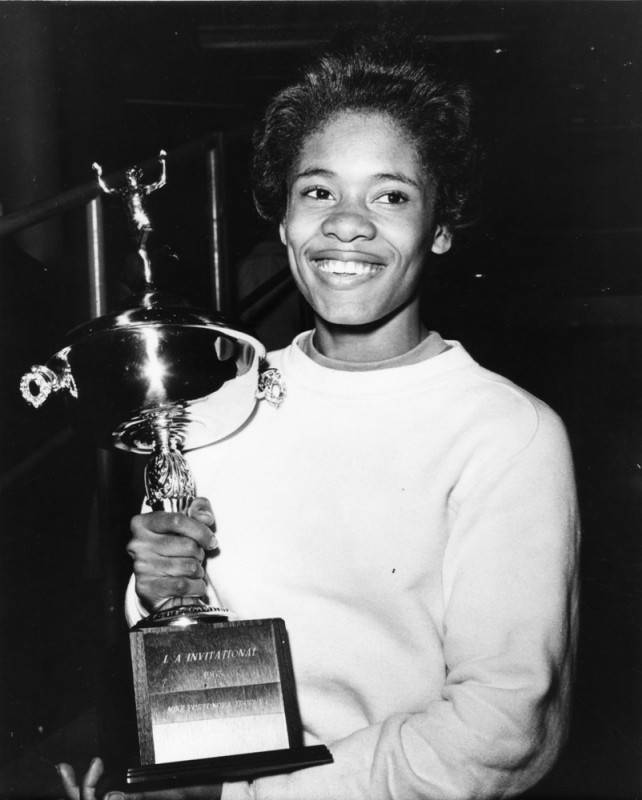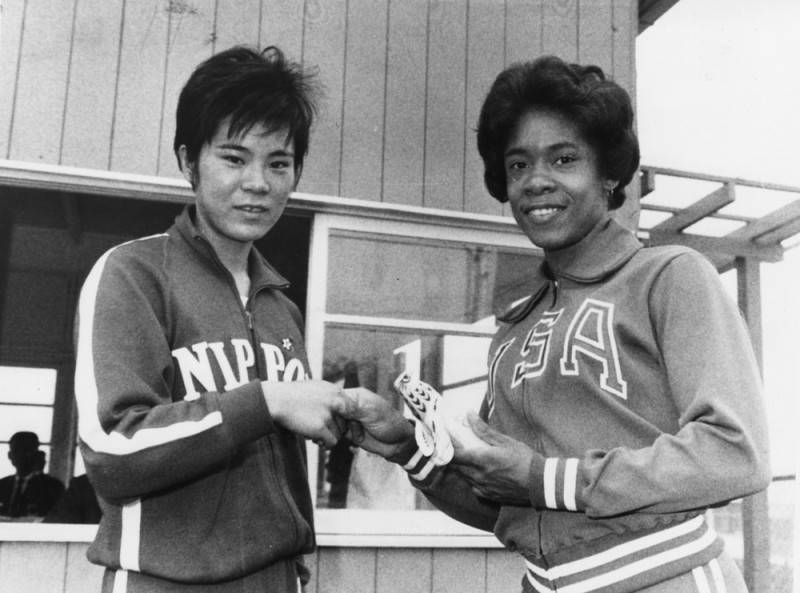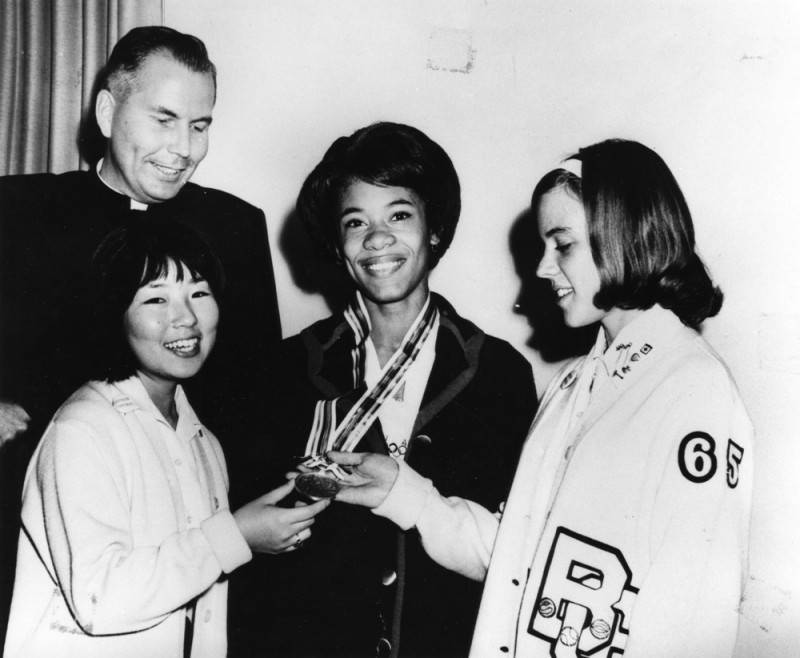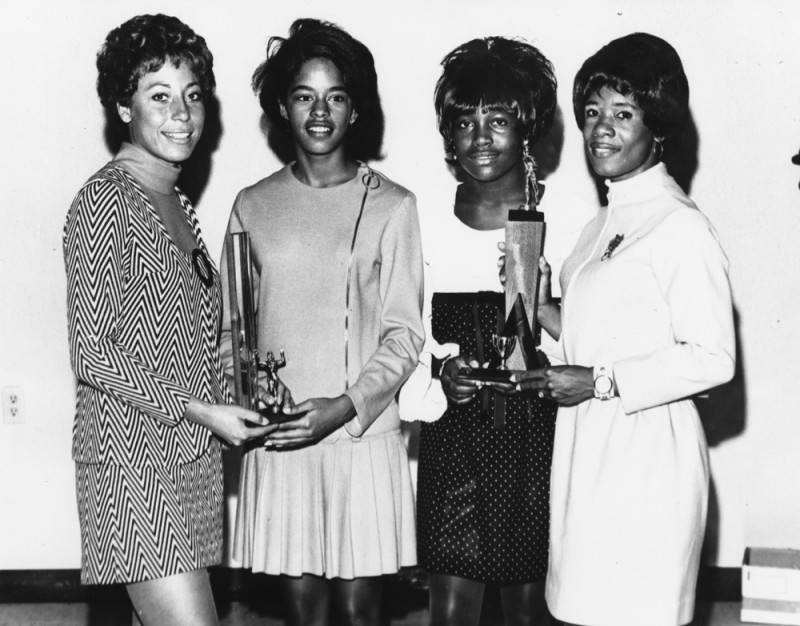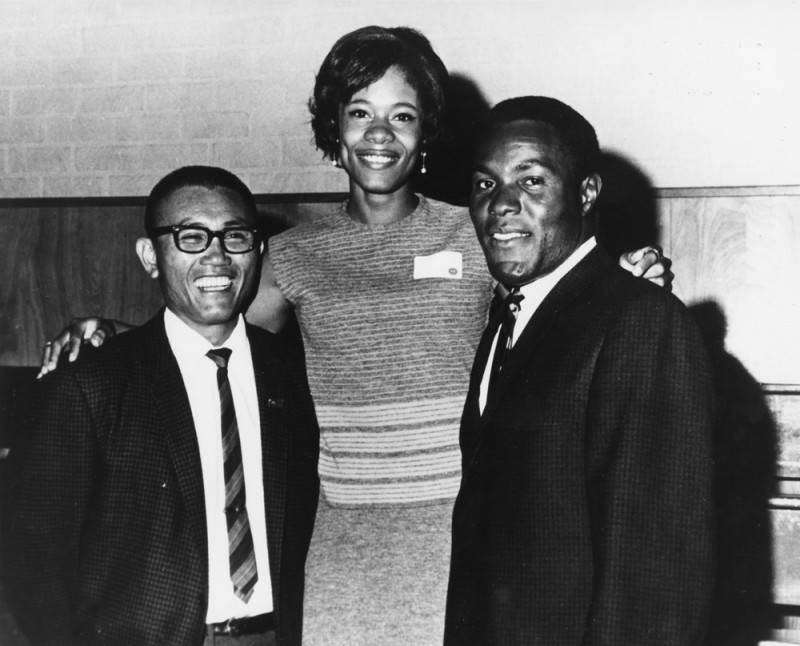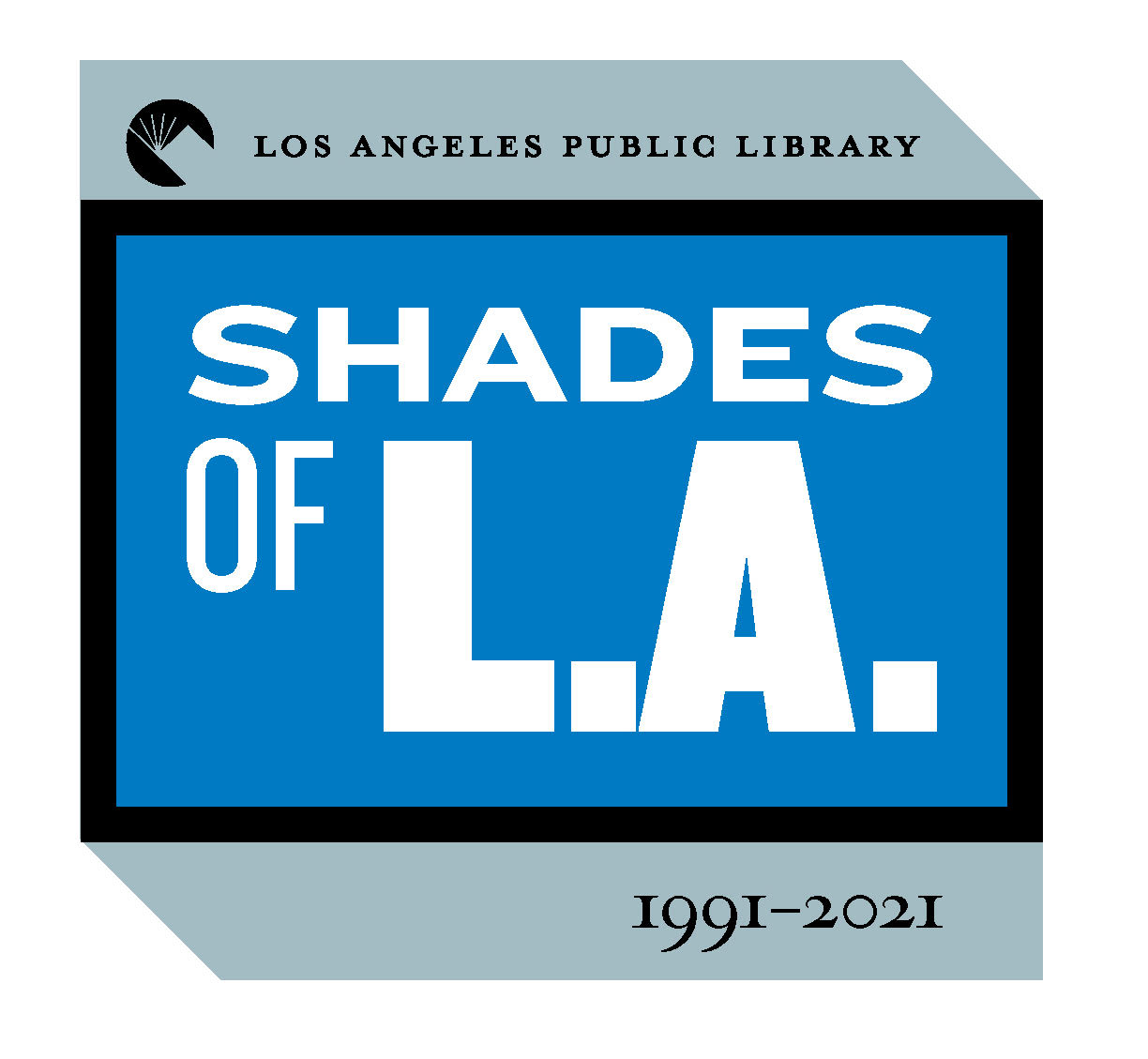 Thirty years ago the Los Angeles Public Library embarked on a ground-breaking, collection-building project – reaching out to the diverse communities of the region for family photographs that would provide depth and nuance to an understanding of this region’s multi-cultural history. The project and its results are called Shades of L.A. The support group Photo Friends of the L.A. Public Library was formed to assist in that effort. The group endures.
Thirty years ago the Los Angeles Public Library embarked on a ground-breaking, collection-building project – reaching out to the diverse communities of the region for family photographs that would provide depth and nuance to an understanding of this region’s multi-cultural history. The project and its results are called Shades of L.A. The support group Photo Friends of the L.A. Public Library was formed to assist in that effort. The group endures.
Los Angeles is a place literally built on the intersection of cultures: from the Tongva and other Native tribes that lived here for centuries to the Spanish, Mexican, and Black pobladores who established the pueblo in 1781, to the Hispanic and White cultures that duked it out for dominance in the early 19th century. As so often happens, the dominant culture, in this case the White American settlers, was quickly able to put their stamp on the historical narrative.
In the 20th century, Los Angeles has seen further waves of immigration, from Eastern Europe, the Middle East, East Africa, and Latin America. Asian immigration has come in distinctive waves, beginning with Chinese in the late 19th century, to Japanese and Filipinos in the first part of the 20th, and, more recently, Southeast Asians, the refugees of the wars that decimated that region.
With major funding from Security Pacific National Bank and California Humanities, LAPL staff and volunteers were able to reach out to many ethnic communities and collect or copy over 7,000 images documenting family businesses, celebrations, religious and cultural traditions, and ordinary life. In addition, volunteers and staff taped a dozen oral histories from participants. These photos and stories go far to balance the collection of the library. For a more detailed overview of the project, see https://www.lapl.org/collections-resources/photo-collection/shades-la.
L.A. born and raised
Today we are featuring Marilyn White who grew up in west L.A. and achieved excellence as an athlete and as a teacher. She spoke to the project’s director, Amy Kitchener, in 1992 as part of the Shades of L.A.: African American Community project. All photos were provided by Marilyn, except where otherwise indicated.
An early photo shows Marilyn, center, with her parents Mary Lorenzo and Nelson, young brother, Robert, and twin baby sisters, Donna and Ela, at their home on West 43rd Street in L.A. Some years later, Marilyn and her family recreated the photo with her own son taking the place of young Robert (minus the toy handcuffs). Image #00001459.
Marilyn grew up in a close-knit home in various neighborhoods of South Central Los Angeles. Her father, a hard-working school custodian, was a hero to her. She counts her mother as the most influential person in her life.
I remember that I used to always follow my dad down to Central [Avenue]. He would walk down to Central to go to the market. I loved hot dogs, so my dad would go to the market and he would always get me a hot dog. The neighbors said “Every time you see Nelson White, you’re going to see Marilyn because she’s his shadow.” And that’s quite true. It’s always been true.
In high school, Marilyn was introduced to track and field sports. About the same time, she was discovered by a trainer, Fred Jones, looking to put together a team of female track athletes to compete locally; Marilyn became a member of the L.A. Mercurettes. Her family was very supportive of her athletic ambitions. Her father dug out a pit in the back yard and filled it with sand so that she could practice the long jump there.
The photo above appeared in the Valley Times in 1963 under the headline: “Is there a gold medal in her future?” Marilyn, second from left, ran in the L.A. Invitational, beating both 1960 Olympic gold medalist Wilma Rudolph (center) and Jutta Heine (second from right), the German champion, in the 60-yard dash. Alan Hyde, photographer, Valley Times Collection. Image #00053730.
Los Angeles
In the fall of 1962, Marilyn enrolled at UCLA. (She later completed her undergraduate education at Pepperdine.) She began training hard with Fred Jones and the Mercurettes.
I ran in the L.A. Invitational in 1963. And I could not believe that I actually had beat Wilma Rudolph, but I had. And in the process I had beat Jutta Heine of Germany, the German champion. So I received the Athlete of the Meet Award. And, as you can see, we didn’t even have uniforms. We just had sweat clothes and that’s what our team wore because we were such a new team. But this was just the amazement of my life.
Marilyn with the Athlete of the Meet Award (the [distance runner] Mike Portanova award), L.A. Invitational, January 19, 1963. Image #00001691.
The sports media of the day marveled at the upset success of the “tiny” American runner, particularly when contrasted with the nearly six-foot tall German. A Sports Illustrated article, which gushed over the physical presence of Jutta Heine and framed the event as a contest between the German and Wilma Rudolph, had to acknowledge the surprise outcome at the Invitational:
The only trouble is that, while Jutta and Wilma were worrying about each other, an unknown 18-year-old UCLA freshman named Marilyn White ran away from them both.
“I never saw her,” said Wilma.
“I never heard of her,” said Jutta. Neither had anyone else.
Why neither Wilma nor Jutta could see Marilyn during the race is surprising, since she was right there, two yards ahead of them all the way.
(Roy Terrell, “A Dash of Style for Track and Field,” Sports Illustrated, January 28, 1963)
After the Invitational, Marilyn participated in the Pan-American Games in Brazil in April, but did not earn a medal. Next on the horizon were the 1964 summer Olympics!
Tokyo
Tokyo, Japan, hosted the 1964 Summer Olympics. The city again played host to the games in 2021, 57 years later.
Marilyn was chosen as part of the American track and field team. While she missed out on a medal by inches in the 100 meter run, she and her teammates took the silver medal in the 4 x 100 meter relay race.
We boggled our pass and we came in second instead of first. So it was a frustrating games, but it was a learning experience. It was a wonderful experience. I wouldn’t trade it for anything in the world, because once you are an Olympian, you are an Olympian forever. And nobody can ever take that away from you.
I think that was the last of the non-political Olympic Games, in ’64, because as you know in ’68 there was just turmoil. It was wonderful.
Marilyn and Japanese athlete Makiko Izawa at the 1964 Tokyo Olympics. Image #00001300.
At the games Marilyn became acquainted with a Japanese sprinter, Makiko Izawa. Although they eventually lost touch, the friendship had long-reaching effects:
We had become friends and we exchanged gifts. And during the 1984 games [in Los Angeles] I attempted to try and find Makiko again. An in my attempt, [an] article was run in the Japanese newspaper and my whole class and I started receiving all kinds of mail and trinkets from people in Japan who had read the article about me having been in Tokyo [in 1964] and looking for Makiko. And people just started writing and we wrote back. And we had pen pals for the whole year. My class made their own kimonos out of sheets. We had an “Olympic Games.” We had everything at the school and it was all an outgrowth of this attempt to find Makiko.
Marilyn shows off her Olympic medal at her alma mater, Bishop Conaty High School in Los Angeles, circa 1965. Marilyn credits much of her success to the education she received at the all-girls Catholic school. “I was really introduced to track and field in high school at Bishop Conaty. We had a field day once a year and I still have my very first trophy that I got there. It was great fun and it turned me on to excelling in something. It felt good to excel.” Image #00001690.
Marilyn (far right) and her relay teammates display trophies won at the Mt. San Antonio College games in Walnut, California, 1965. Charlotte Cook, at far left, became Marilyn’s roommate during the year she taught in Washington D.C. Image # 00001290.
Marilyn with decathletes C.K. Yang and Rafer Johnson, 1966. Yang and Johnson were students at UCLA who competed against each other in the 1960 Olympics, taking the silver and gold medals respectively in the decathlon. Image #00001291.
While a student at UCLA, Marilyn took a work-study position teaching PE at the Santa Monica Boys Club:
And at the end of that year we had a field day. And it was a field day, it was a dog show, it was a carnival; it was a wonderful event that we had at Santa Monica Boys Club. And I invited [Olympic athletes] C.K. Yang and Rafer Johnson to it. And they came!
Asked to pinpoint the highlight of her sports career, Marilyn recalls the thrill of the Olympic Trials on Randalls Island, New York City, in 1964:
I remember the night that I qualified for the 100 meters calling home and having my whole family laughing and crying and yelling on the phone at the other end. That was really good. And I was just grateful that I was able to go to the Olympic Games while my father was still alive to see it. Because that man worked so hard as a custodian and then in the evenings he would take me to practice and sometimes he would be asleep at practice because it was just so hard on him.
I remember my father saying that, as a Black person, you’re going to have to work twice as hard to go half as far. And I’ve always remembered that.
Born to teach
Marilyn’s experience as an athlete led her to a career as a physical education teacher, first for one year in Washington D.C., and then back in Los Angeles. Ultimately she transitioned to classroom teaching, but kept up her interest in athletics, competing again in an amateur league at the age of 40. She was still teaching as of the date of the interview.
I think I had been a teacher since I was age two or three. I really believe that teachers are born, they’re not made. And I can remember when we lived on 43rd Street, my backyard had this pomegranate tree and it was a giant tree that opened out and looked like a cave. There was a little dark area you could go inside. I used to play school out there. I’d make my little sisters and my brother sit there and I’d play school with them, and, you know, sometimes the kids in the neighborhood would come over and we’d play school. I was always the teacher.
Diving into family history
Toward the end of the interview, Marilyn talks of her new-found passion for genealogy and family history, sparked by a workshop during Black History Week in 1988. She describes tracing her family’s history on both her mother and father’s sides back several generations, meeting relatives in the process. Her stated goal, she tells the interviewer, is to travel to West Africa for further research:
I haven’t crossed the ocean yet, but I’m standing on the shore.



